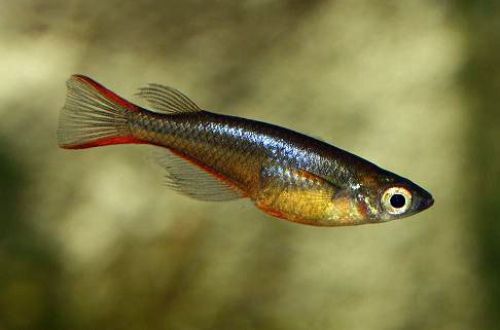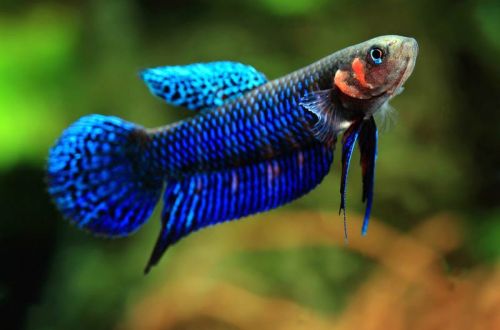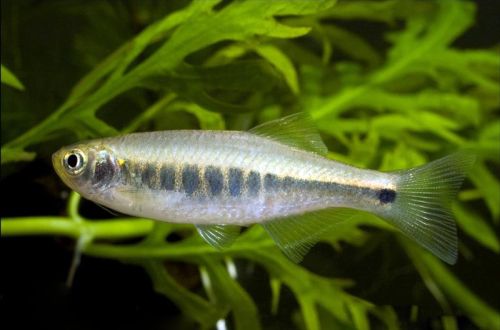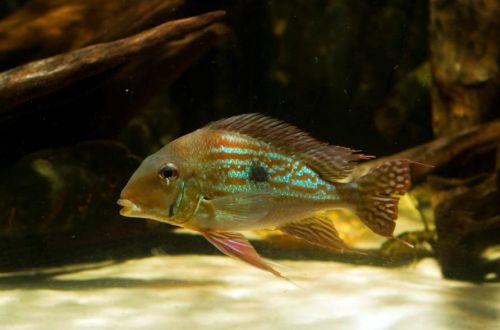
Geophagus Weinmiller
Weinmiller’s Geophagus, scientific name Geophagus winemilleri, belongs to the Cichlidae family. The fish is named after zoologist Kirk O. Winemiller, who spent twenty years studying tropical fish in present-day Venezuela, discovering and describing many new species.
Demanding to the conditions of keeping, the species needs high water quality and a special diet, which limits its distribution in amateur aquarism.

Contents
Habitat
It comes from South America from the territory of Venezuela. Found in the Orinoco River basin. Inhabits regions with clean, clear water, preferring to stay along gently sloping banks or islands in the middle of the river with soft substrates of sand and silt.
Brief information:
- The volume of the aquarium – from 500 liters.
- Temperature – 26-30°C
- Value pH — 4.0–7.0
- Water hardness – 0–8 dGH
- Substrate type – sandy
- Lighting – subdued
- Brackish water – no
- Water movement is weak
- The size of the fish is 18–20 cm.
- Food – small sinking food from a variety of products
- Temperament – peaceful
- Keeping in a group of 5-8 individuals
Description
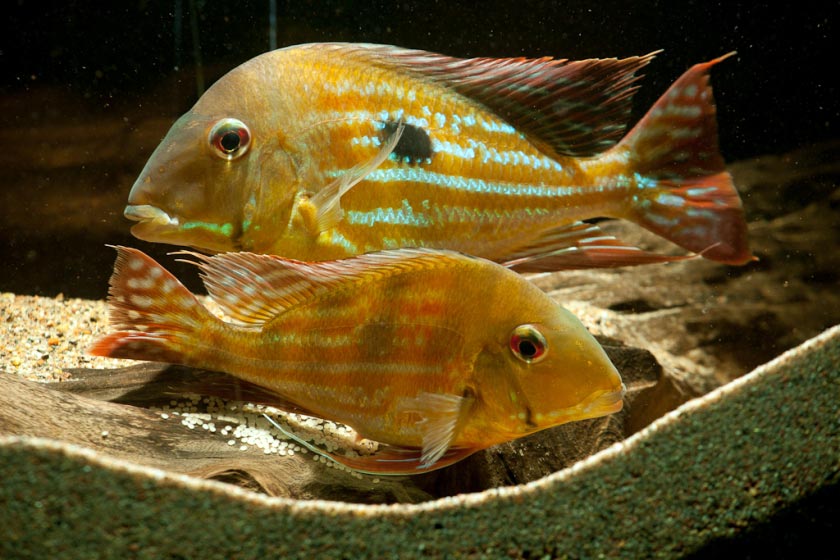
Adults reach a length of 18-20 cm. The fish has a yellow-orange color with rows of blue stripes stretching from head to tail. There is a large dark spot in the middle of the body. Red fins with light speckles. Sexual dimorphism is weakly expressed. There are no clear visible differences between male and female.
Food
In nature, they feed near the bottom, sifting sand with their mouths in search of small organisms. To organize normal conditions for eating in an aquarium, it is necessary to use sandy soil. Serve sinking dry food, which contains herbal supplements, in combination with frozen brine shrimp, daphnia, bloodworm pieces. Food particles should be small.
Maintenance and care, arrangement of the aquarium
Optimal aquarium sizes for a group of 5 fish start at 500 liters. The design is simple and includes two main components – sandy soil and a few snags. The main attention should be paid to the soil, it should not contain large abrasive particles that can get stuck in the mouth of the fish during feeding. Rooting plants are not recommended as they will be quickly dug up. Floating plants are acceptable and will provide additional shading.
Successful long-term management of Geophagus Weinmiller depends on maintaining stable water conditions with suitable pH and dGH values, which are also within a rather narrow tolerance range. In addition, the water must contain a large amount of dissolved tannins. In nature, they are formed as a result of the decomposition of plant organic matter (branches, roots, leaves of trees, etc.), which enter rivers in abundance. They also turn the water brown. In an aquarium, the leaves of some trees can also become a source of tannins.
It is worth remembering that during feeding, fish create clouds of suspended matter, which can enter the filtration system. This must be taken into account when choosing a specific filter model and its location in the aquarium in order to avoid sad consequences.
Behavior and Compatibility
Peaceful calm fish. Compatible with many other species that can live in similar conditions. However, fish that are too small (about 1 cm) may be accidentally eaten.
They prefer to be in a group of 5-8 individuals. With a smaller number, it is likely that the dominant male will become intolerant of weaker relatives. The risk of this is especially great if the aquarium is not large enough, for example only 500 liters.
Breeding / breeding
Under favorable conditions, fish are able to give offspring regularly. In aquariums, no seasonality was found. With the onset of the mating season, the alpha male and female form a temporary pair and occupy a site at the bottom. After a short courtship, the female begins to lay eggs several at a time. In total, the clutch can contain up to 200 eggs. Any flat surface usually serves as a spawning ground: a snag, a large flat stone. The incubation period lasts about 72 hours. All this time, the parents are nearby, protecting future offspring from any potential danger.
When the fry hatch, the female, sometimes together with the male, takes them into her mouth, where they are for the first days of life (about one to two weeks). In the future, fry, in case of danger, continue to hide in the mouth of their parents until they grow too large. A similar strategy for protecting offspring is characteristic of many cichlids, which are found in one form or another on other continents, for example, among the cichlids of lakes Tanganyika and Malawi in Africa.
Fish diseases
The main cause of diseases lies in the conditions of detention, if they go beyond the permissible range, then immunity suppression inevitably occurs and the fish becomes susceptible to various infections that are inevitably present in the environment. If the first suspicions arise that the fish is sick, the first step is to check the water parameters and the presence of dangerous concentrations of nitrogen cycle products. Restoration of normal/suitable conditions often promotes healing. However, in some cases, medical treatment is indispensable. Read more about symptoms and treatments in the Aquarium Fish Diseases section.



